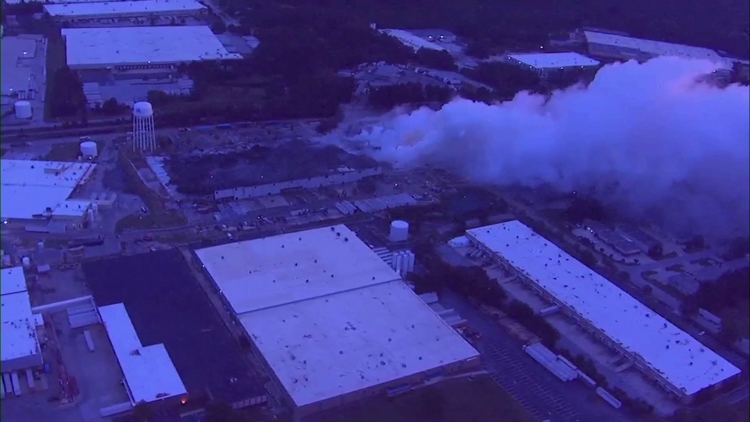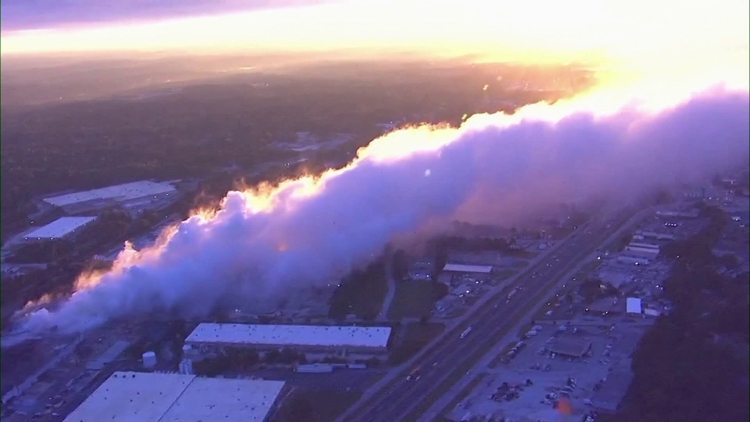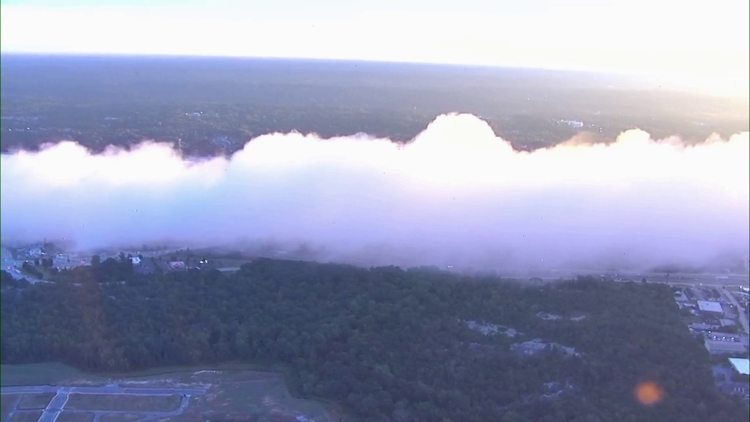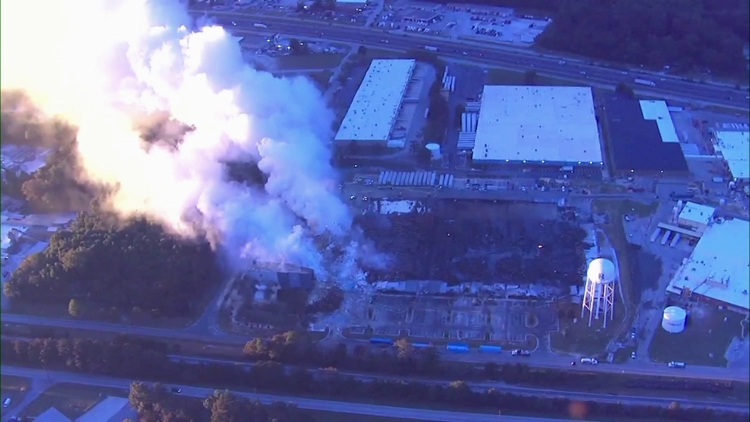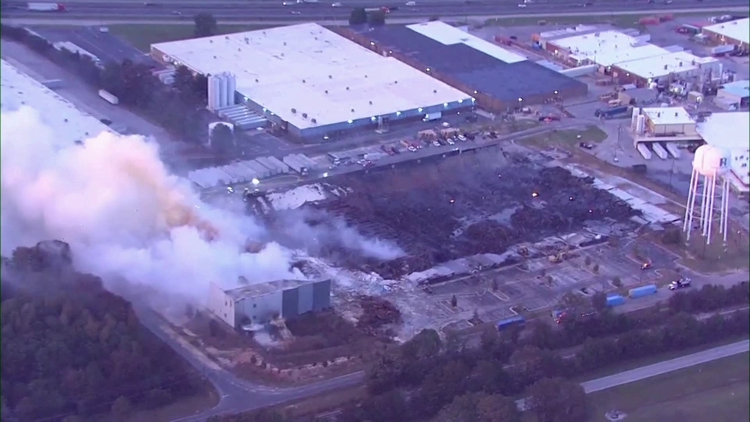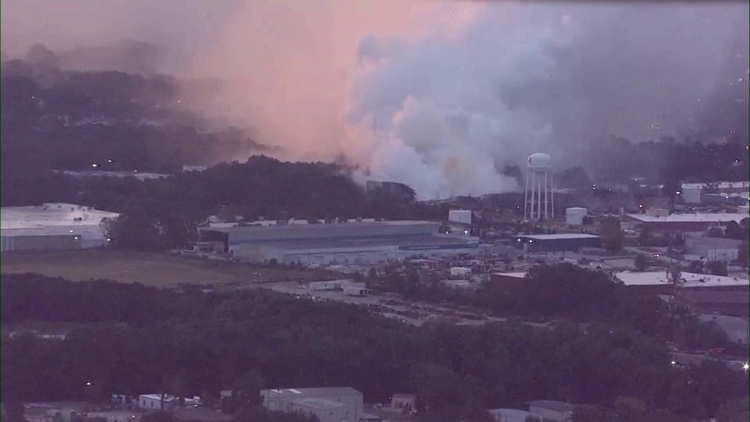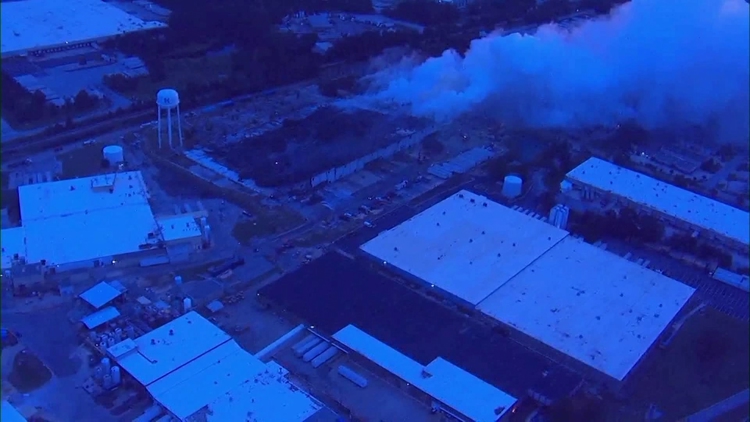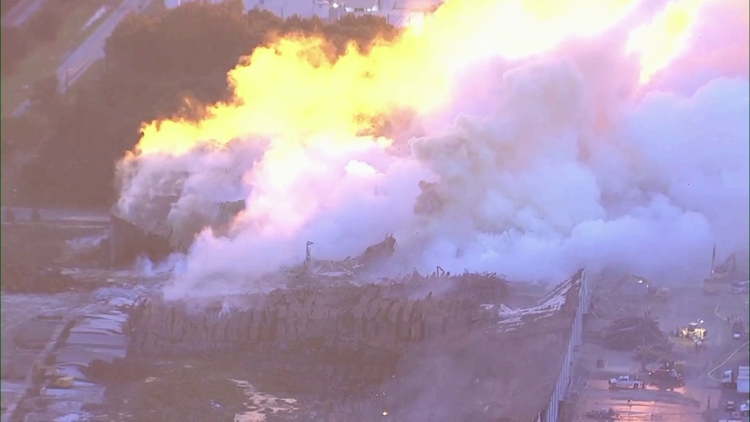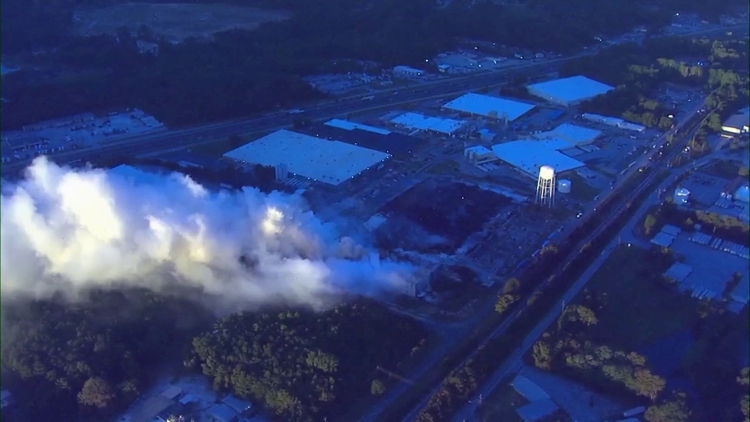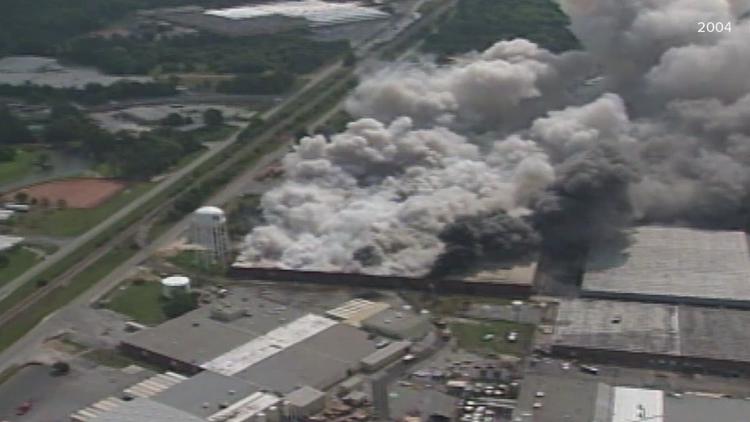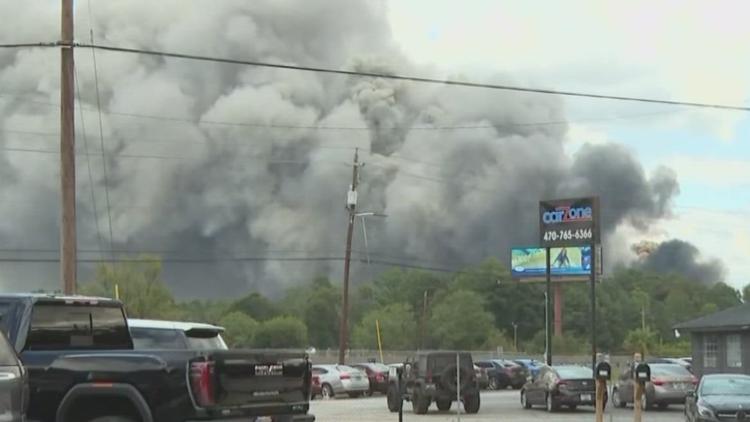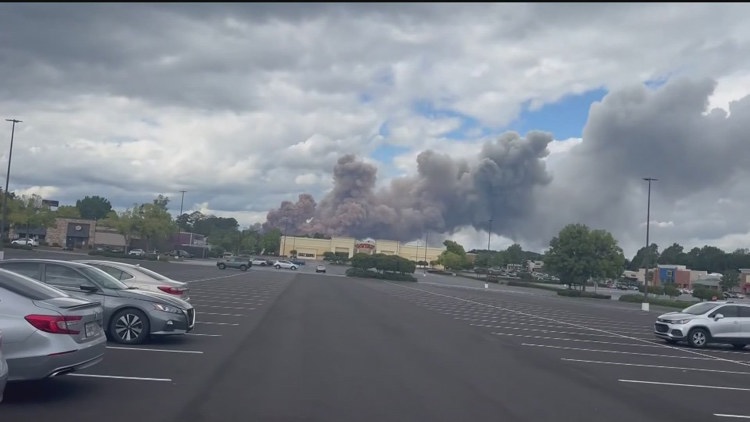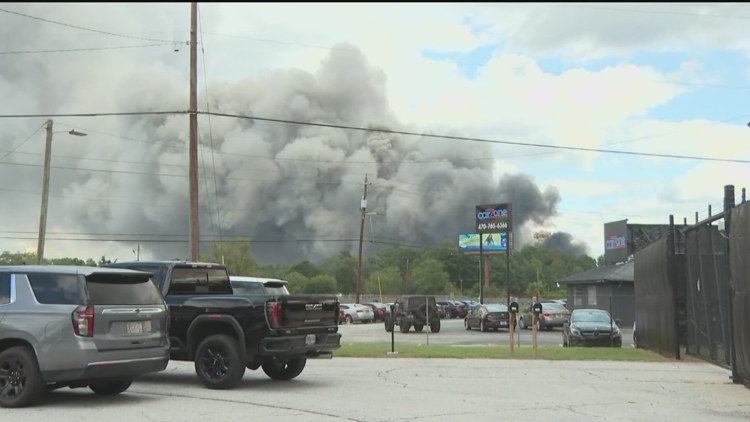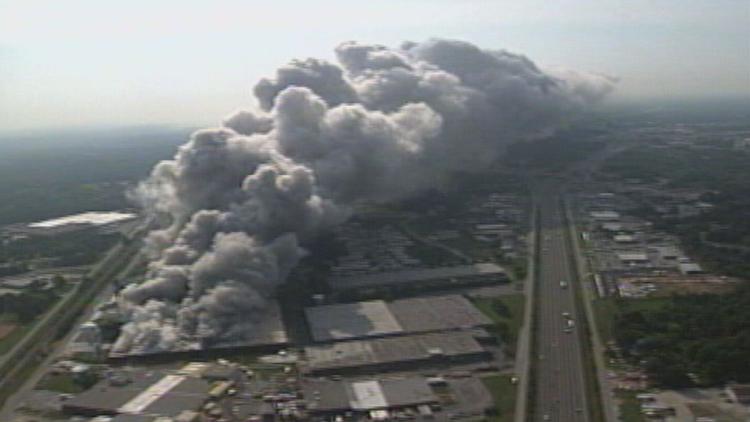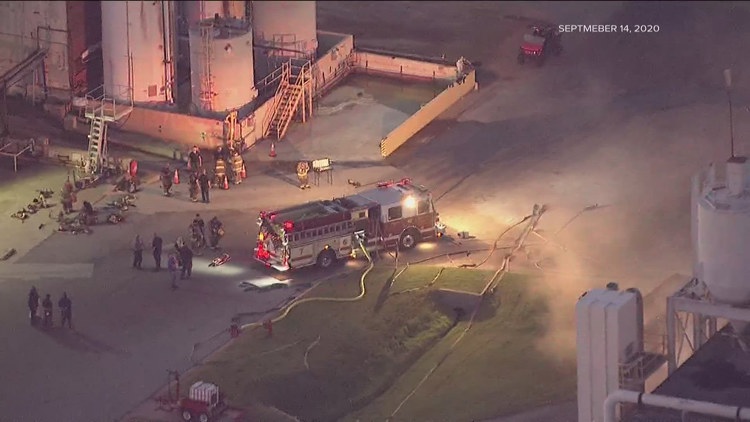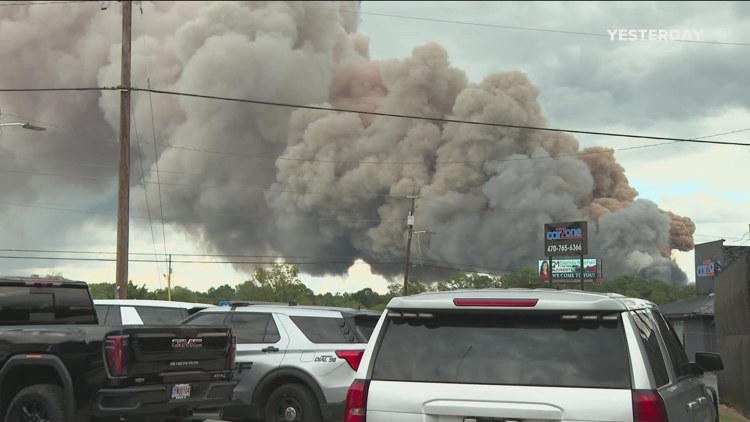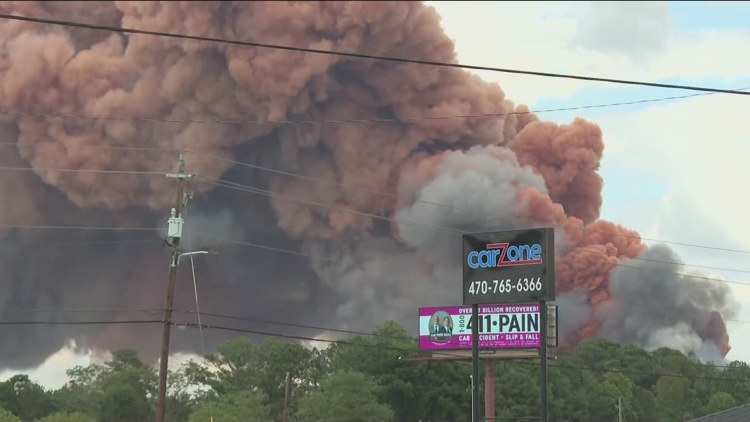CONYERS, Ga. — The U.S. Chemical Safety and Hazard Investigation Board (CSB) provided an update on Friday on its investigation into the Conyers chemical plume disaster.
On Sept. 29, a massive fire sparked at a BioLab facility in Rockdale County, which filled the air with toxic chemicals and smoke for weeks. The catastrophic incident led to significant community impacts, including widespread evacuations and shelter-in-place orders.
According to the CSB, the incident began with a chemical reaction involving trichloroisocyanuric acid (TCCA), sodium dichloroisocyanurate (DCCA), and bromochloro-5,5-dimethylimidazolidine-2,4-dione (BCDMH) stored in a warehouse at the facility.
The CSB's investigation revealed that the chemicals decomposed, releasing heat and toxic vapors and eventually igniting. The resulting blaze and plume of hazardous smoke, including chlorine and other toxic substances, caused widespread alarm.
Story continues below gallery.
Conyers BioLab chemical plume from fire in Rockdale County
The CSB said it has been reported that approximately 17,000 residents evacuated, while nearly 90,000 people in metropolitan Atlanta were advised to shelter in place. I-20, next to the Bio-Lab facility, was closed for 18 hours, and the surrounding roads were also affected. Nightly shelter-in-place advisories continued for weeks as air quality concerns persisted. The warehouse involved in the incident was destroyed.
"This incident and the substantial potential risk that it posed to the surrounding community was completely unacceptable. Reactive chemical incidents can have severe environmental and public safety impacts due to the combination of fire, toxic gas emissions, and hazardous materials involved, and Bio-Lab and any other facility that has reactive chemicals onsite must manage those materials safely," CSB Chairperson Steve Owens said in the release.
The investigation found that the lab called a permanent fire watch staff after smelling strong odors months before the fire.
The CSB provided the following outline of the events surrounding the chemical plume:
Timeline of events | Conyers chemical plume disaster
5:00 a.m.: A Bio-Lab employee conducting a fire watch at the Plant 12 storage warehouse reported hearing a popping sound, which they attributed to wet product. No flames were visible at the time.
5:10 a.m.: After failing to isolate the reacting materials, the employee called 911 when they saw large plumes of toxic vapors inside the building.
6:30 a.m.: Visible flames emerged from the reaction site and were extinguished within two hours.
12:30 p.m.: Emergency responders initiated evacuations after a second, larger fire broke out at Plant 12.
4:00 p.m.: The second fire was extinguished.
Surrounding areas weren't told to shelter in place until after 7:30 a.m.
During the days following the incident, air monitoring by the Environmental Protection Agency (EPA) detected elevated levels of chlorine and hydrogen chloride, particularly during nighttime hours from September 30 to October 2.
Ongoing investigation into Conyers chemical plume
The CSB is analyzing several critical factors, including:
The cause of the chemical decomposition, toxic vapor release, and subsequent fires.
Proper storage and handling practices for oxidizers and chemical compatibility.
Emergency response best practices for bulk solid oxidizer reactions.
Regulatory and industry guidance on fire protection systems for such chemicals.
The CSB said its investigation remains ongoing and will provide complete findings, analyses, and recommendations in its final report.
Ronnie-Ray Stewart is a tire technician at Maxx Tire Services, which is minutes from BioLab, and has been there for nine years. He said he wasn't surprised by the findings.
"That's really concerning this has happened. This is the third time... since the accident, but when it continues to happen, it feels like we're just like one big experiment, happening to us. So, we're not even sure what the long-term effects might be on our health," Stewart said.
He said he wished he had been notified earlier.
"They were trying their best, but, with the lateness, that is a lot of negligence," Stewart said.
He, and other residents, are calling for the lab to be moved out of their community.
"It would be foolish just to continue to want to do this type of business right there," Stewart said.
For additional updates and more information about the CSB, click here.
11Alive received a statement from a BioLab spokesperson regarding the report:
BioLab has a strong track record of working constructively with regulatory agencies and will continue to cooperate with the CSB’s investigation, which still remains ongoing. Our top priority is and has always been the health and safety of the communities within which we operate, and we worked collaboratively with first responders and local, state, and federal authorities to successfully remediate the situation at our Conyers warehouse storing chemicals that treat swimming pools and spas. We remain firmly committed to understanding the causes of the incident and to making things right for impacted area residents and business owners.



